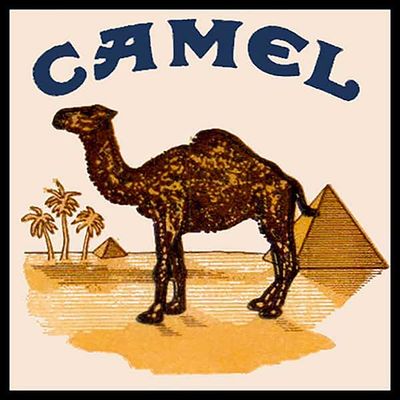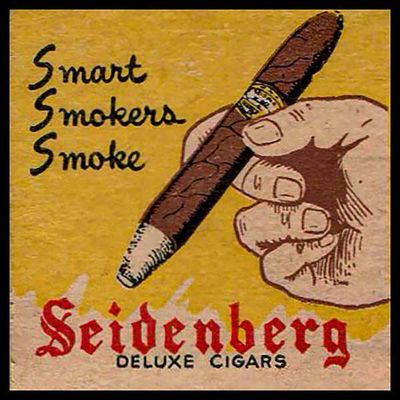Lighting Up Sales: How Tobacco Companies Utilized Vintage Matchbooks in Advertising and Marketing
In the mid-20th century, matchbooks were an indispensable tool for lighting cigarettes, cigars, and pipes—a natural extension for tobacco companies looking to promote their products. These small, practical items became powerful advertising mediums, helping tobacco brands reach a broad audience and build brand loyalty. This article explores how tobacco companies ingeniously utilized vintage matchbooks in their advertising and marketing efforts, creating lasting impressions and driving sales.
The Rise of Matchbook Advertising
Matchbooks emerged as a popular advertising medium in the early 20th century, coinciding with the rise of mass-market consumer goods and the growth of advertising. Tobacco companies quickly recognized the potential of matchbooks as a cost-effective and widespread marketing tool. Given the frequent use of matches by smokers, matchbooks provided a direct and continuous connection to their target audience.
Designing for Impact
Tobacco companies invested in visually striking matchbook designs to capture attention and convey their brand messages effectively. These matchbooks featured vibrant colors, eye-catching graphics, and distinctive logos to stand out. Iconic brands like Camel, Lucky Strike, and Marlboro used bold imagery and memorable slogans such as "I'd Walk a Mile for a Camel," "It's Toasted," and "Come to Where the Flavor Is" to create strong brand identities.
The matchbook covers often showcased the packaging of the cigarettes, emphasizing the brand's distinctiveness and reinforcing brand recognition. Some designs also included stylish and aspirational images, such as attractive models or rugged cowboys, to evoke specific lifestyles and appeal to different consumer demographics.
Promoting Special Offers and Collectibles
In addition to brand promotion, tobacco companies used matchbooks to advertise special offers, coupons, and collectible series. Matchbooks might include discounts on cigarette packs or promotional codes for additional merchandise. Collectible matchbook series became particularly popular, encouraging consumers to collect all designs featuring different themes such as historical figures, famous landmarks, or sports icons. This strategy not only boosted matchbook distribution but also fostered brand loyalty and repeat purchases.
Reinforcing Brand Loyalty and Recognition
Matchbooks served as constant reminders of the tobacco brand in everyday life. Smokers frequently handled matchbooks, keeping them in their pockets, bags, and homes, which ensured that the brand's message was repeatedly seen and reinforced. The practical use of matchbooks also meant that consumers associated the convenience of lighting their cigarettes with the specific brand, further ingraining brand loyalty.
Expanding Reach Through Strategic Distribution
Tobacco companies strategically distributed matchbooks to maximize their reach. Matchbooks were handed out at point-of-sale locations such as tobacco shops, convenience stores, and bars. They were also distributed at events, such as fairs, concerts, and sporting events, where large gatherings provided opportunities for widespread exposure. Some companies even partnered with other businesses to co-brand matchbooks, extending their advertising reach into different markets and demographics.
Highlighting Innovations and New Products
Matchbooks were also used to highlight new products and innovations within the tobacco industry. When introducing new cigarette varieties, packaging designs, or filter technologies, tobacco companies used matchbooks to educate consumers and generate excitement. These matchbooks often included brief descriptions of the new features and benefits, encouraging smokers to try the latest offerings.
Navigating Advertising Restrictions
As regulations on tobacco advertising became stricter, especially concerning television and radio commercials, matchbooks provided an alternative advertising medium that could still reach a wide audience. They allowed tobacco companies to maintain a visible presence and continue promoting their products despite growing advertising restrictions. This adaptability helped sustain the relevance and visibility of tobacco brands in a changing regulatory environment.
Collectible Nostalgia and Historical Value
Today, vintage tobacco matchbooks are cherished collectibles, reflecting a significant era in advertising history. They offer insights into the marketing strategies and cultural trends of their time, showcasing the creativity and innovation of tobacco companies in engaging consumers. Collectors and historians value these matchbooks for their artistic designs, historical significance, and the stories they tell about mid-20th-century consumer culture.
Conclusion
Tobacco companies ingeniously utilized vintage matchbooks as a versatile and effective advertising tool. By leveraging eye-catching designs, strategic distribution, and the practical utility of matchbooks, they created lasting impressions and fostered strong brand loyalty. Despite changes in advertising regulations, matchbooks remained a valuable medium for promoting tobacco products and engaging consumers. Today, these vintage matchbooks serve as nostalgic artifacts, offering a glimpse into the dynamic and influential world of mid-20th-century tobacco advertising.


